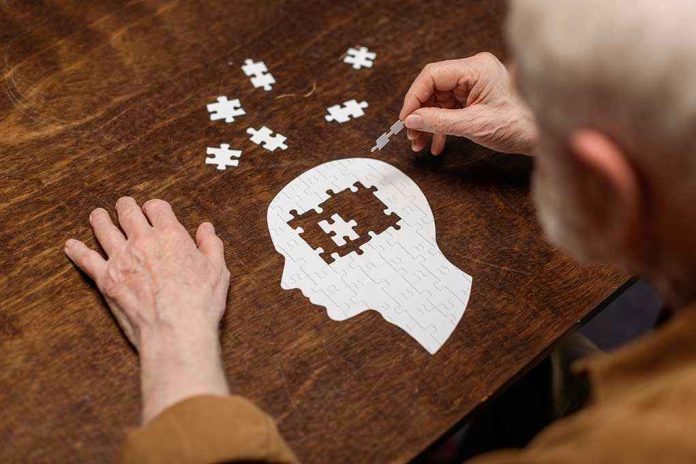
American researchers have achieved a stunning breakthrough in Alzheimer’s treatment using nanotechnology that reversed the disease in mice within one hour, offering hope for millions of families devastated by this cruel condition.
Story Highlights
- Scientists achieved 50-60% reduction in Alzheimer’s plaques within one hour using nanotechnology
- Revolutionary approach targets blood-brain barrier instead of brain cells directly
- Mouse studies showed lasting cognitive recovery months after treatment with no toxicity
- International collaboration represents paradigm shift away from failed traditional therapies
Revolutionary Nanotechnology Approach Shows Immediate Results
Researchers from the Institute for Bioengineering of Catalonia, West China Hospital, and UK partners demonstrated unprecedented success using supramolecular drugs that restore blood-brain barrier function. The breakthrough treatment achieved a remarkable 50-60% reduction in amyloid-β protein levels within just one hour of injection. Unlike traditional approaches that target neurons or amyloid plaques directly, this innovative method focuses on restoring the brain’s vascular infrastructure, representing a fundamental shift in therapeutic strategy.
Sustained Recovery Challenges Decades of Failed Treatments
The nanotechnology treatment delivered lasting benefits that persisted months after initial administration, with mouse models showing dramatic cognitive improvements. Traditional Alzheimer’s therapies have faced numerous clinical trial failures over decades, primarily because they focused on targeting brain cells directly rather than addressing underlying vascular dysfunction. This new approach uses nanoparticles as therapeutic agents themselves, functioning as supramolecular drugs rather than mere delivery vehicles for other medications.
International Collaboration Offers Hope for American Families
The research represents years of collaborative effort between Spanish, Chinese, and UK institutions, combining expertise in bioengineering, nanotechnology, and neuroscience. Over 6 million Americans currently suffer from Alzheimer’s disease, with families bearing enormous emotional and financial burdens from this devastating condition. The treatment showed no observed toxicity in animal studies, suggesting a favorable safety profile that could accelerate clinical translation efforts.
Alzheimer’s breakthrough? Scientists use nanotech to reverse disease in mice https://t.co/ailozB7sFZ pic.twitter.com/SL1p06sJpf
— New York Post (@nypost) October 7, 2025
Clinical Translation Requires Rigorous Safety Validation
While the animal study results demonstrate extraordinary promise, extensive human clinical trials remain necessary before treatments become available to patients. Researchers must conduct comprehensive toxicology studies, pharmacokinetic analysis in larger animal models, and eventual human trials to validate therapeutic potential and safety profiles. The breakthrough opens new research directions focusing on vascular-targeted therapies for neurodegenerative diseases, potentially benefiting millions of Americans affected by cognitive decline and their families who desperately need effective treatments.
Sources:
Scientists achieve striking reversal of Alzheimer’s in mice using nanotechnology





